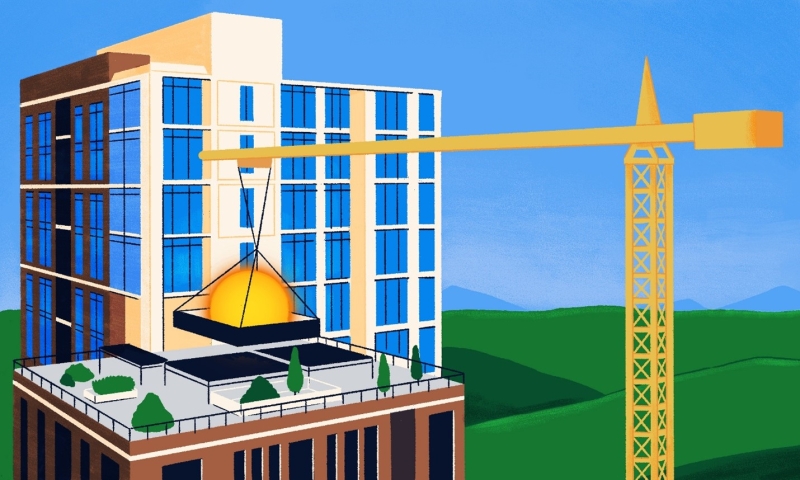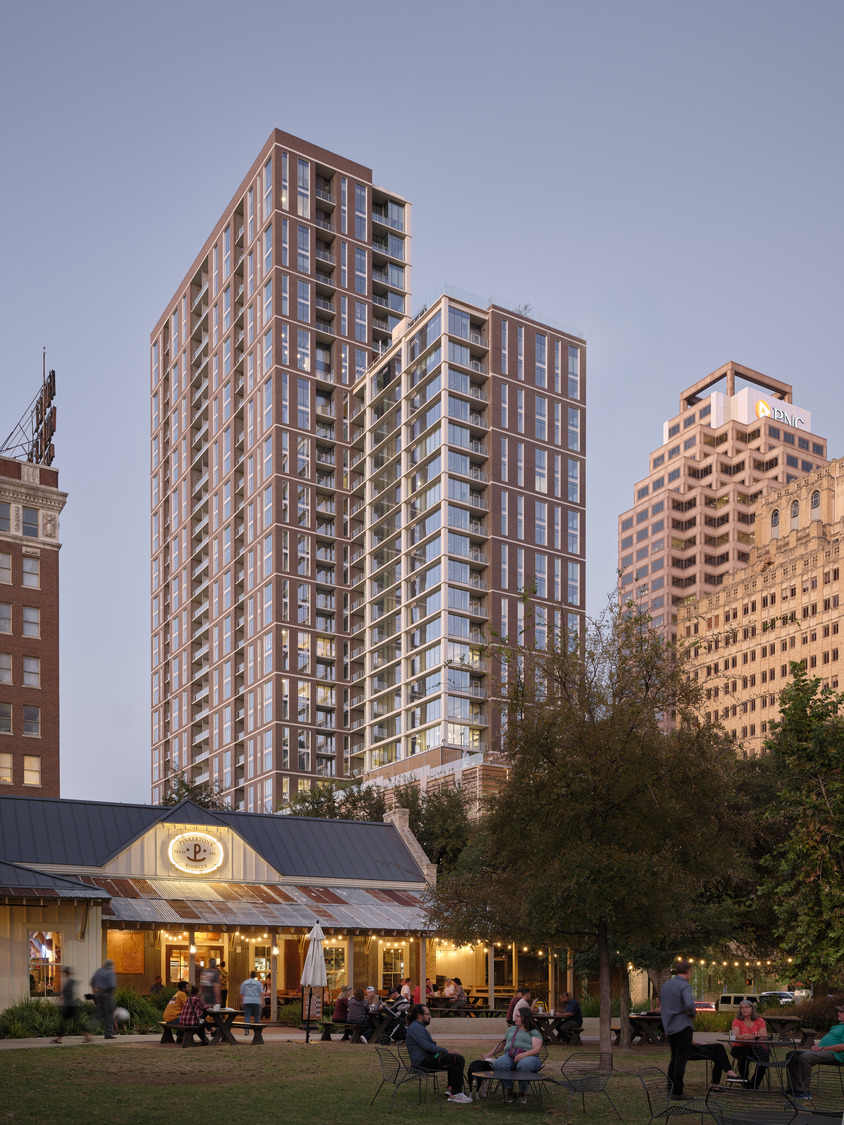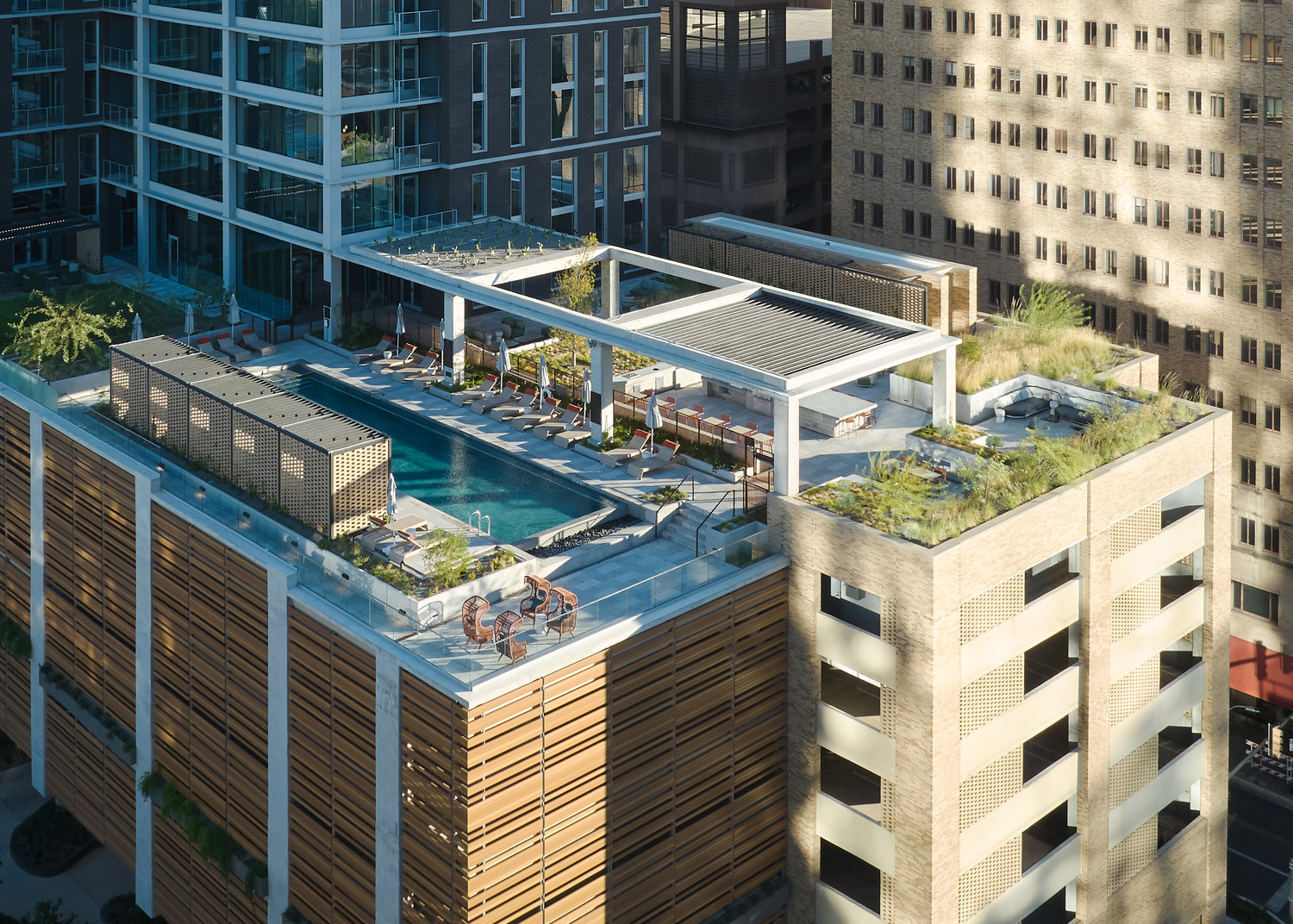
Key takeaways:
• Sustainability as a Strategic Asset: Forward-thinking developers view green design as a long-term value driver.
• Innovation and Investment: Smart building technologies and green financing are making sustainability financially attractive.
• High-Performance Design: Envelope design, passive systems, and automation are now essential for future-ready real estate.
Commercial real estate is undergoing a paradigm shift. Once viewed primarily through the lens of profitability and location, 21st-century development is now increasingly defined by its sustainability credentials. What began as a socially driven movement powered by a vocal minority of environmental advocates has now evolved into a financially viable, data-backed strategy embraced by forward-thinking developers and investors. Today, sustainability is more than an environmental ideal. It’s a competitive advantage.
In the past, limited incentives and incompatible financial models stifled progress. Developers were hesitant to absorb the upfront costs of green design without a clear return on investment. Today, that landscape is changing. A confluence of technological innovation, regulatory support, and tenant demand is making energy efficiency not only more accessible but also more essential.

From Social Ideal to Strategic Advantage
Technological breakthroughs are ushering in a new era of energy-conscious development. Autonomous facilities management systems, high-performance materials, and smart infrastructure are transforming how commercial buildings are designed and operated. Previously, developers faced significant upfront costs, but new tools and innovations are spreading cost savings across nearly every building system. These factors are crucial in convincing developers and owners right from the start of development projects.
Innovative technologies now influence almost every aspect of commercial construction design. This includes advancements in renewable energy and battery storage, lighting upgrades, window treatments and insulation, as well as water and energy conservation, high-performance HVAC systems, and smart building technologies. These innovations are enabling projects to launch with greater speed, flexibility, and long-term value, which appeals to investors looking for both performance and purpose.
The Rise of Green Financing and Market Incentives
Alongside technology, financial mechanisms are accelerating the adoption of sustainable strategies. Green financing options like low-interest capital lending, tax credits, government grants, and green bonds offer developers immediate relief in offsetting costs for energy-efficient upgrades. Increased long-term payoffs are associated with higher property values for Class A commercial real estate developed with cutting-edge energy efficiency amenities, including solar energy, rainwater harvesting, electrochromic windows and window glazing, and autonomous facilities operations. In parallel, state and municipal programs provide rebates for improvements such as solar installations and insulation retrofitting.
Investors are increasingly drawn to projects with strong ESG (Environmental, Social, and Governance) foundations, as these are perceived to be lower-risk and more resilient assets for the future. While rising property values enhance the equity of commercial real estate, the role of tenants is also crucial. Energy-efficient and well-designed buildings often attract higher occupancy rates and can command rental premiums. Moreover, these features help reduce tenant turnover, resulting in stable revenue and lower operating costs over time. This strategy allows building owners to safeguard against revenue loss caused by frequent tenant changes and prolonged vacancies.

Rethinking the Building Envelope
Sustainability is no longer limited to solar panels. While renewable energy systems like rooftop solar, photovoltaic-integrated windows, and geothermal heating remain popular, high-impact “hidden” technologies are quietly transforming building performance.
Electrochromic glass (or smart glass) dynamically tilts in response to daylight, reducing solar gain and improving occupant comfort. Double-glazed windows, with air gaps that prevent heat transfer, are among the most cost-effective ways to improve energy performance, especially in retrofitted historic buildings, which can boost insulation efficiency by up to 70%.1
The physical orientation and exterior design of a building are essential for effectively capturing passive solar energy. Features like windows and materials such as concrete and brick can naturally absorb and distribute heat. Furthermore, buildings can utilize wind energy through rooftop wind turbines, airfoil roofs that channel wind through tunnels, and design elements like wind catchers and cross-ventilation, which direct airflow throughout the interior, providing natural cooling.
Implementing passive solar design, utilizing airfoil roofs to direct wind, and strategically massing structures to enhance natural light and ventilation exemplify how envelope design is becoming a fundamental aspect of low-carbon architecture.
Smarter Buildings, Smarter Systems
Automation is redefining how buildings function. Smart building technologies, ranging from AI-enabled climate control to real-time occupancy sensors, allow for precision management of energy, lighting, and ventilation. These systems respond to usage patterns throughout the day, offering as much as a 20% reduction in energy use.2 Their growing popularity in residential settings is spilling over into commercial developments, where scale magnifies the benefits.
Moreover, smart systems support operational agility. Facility managers can now optimize performance remotely, predict maintenance needs, and ensure compliance with evolving energy codes, all while enhancing the tenant experience.

Case in Point: 300 Main, San Antonio
At 300 Main, a 32-story multifamily tower in the heart of San Antonio, sustainability isn’t just a feature; it’s fundamental in its bones.3 Designed by Page and topped out in 2024, the building incorporates high-performance glazing and insulation, UV-reflective roofing, and water and energy-efficiency building systems.
One standout example of innovation is the reuse of condensate captured from exterior air handlers to irrigate the building’s amenity deck, which features drought-tolerant native landscaping. Situated in a walkable urban core, the project embraces both environmental and social sustainability, supporting reduced car dependency and improved quality of life.
Looking Ahead: Redefining the Value of Sustainability
Sustainability is no longer a social obligation or branding exercise but can be considered an investment in performance. As energy efficiency technologies continue to improve and become more cost-effective, sustainability is emerging as a core pillar of long-term real estate strategy.
For developers and investors alike, this is more than a trend. It is a transformation. By aligning financial goals with environmental performance, the commercial real estate sector is not only addressing climate risk but also creating future-ready spaces that can lead to value, resilience, and innovation.
References:
- Yang, X., et al. Comprehensive performance evaluation of double-glazed windows containing hybrid nanoparticle-enhanced phase change material. Applied Thermal Engineering. 2023; 223: 119976.
- Report Delves Into the Impacts of Commercial Building Controls on Energy Savings. (September 20, 2017.) U.S. Department of Energy.
- Corfus, R. 32-Story San Antonio Tower Tops Out. (June 8, 2023.) Multi-housing News.
